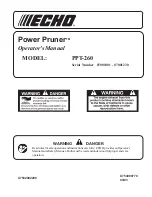
27
Blade Selection Guide
Identify the material and thickness of your workpiece. The chart will show the recommended PITCH,
blade TYPE, and FEED RATE.
Key:
H – Hook
L – Low
S – Skip
M – Medium
R – Regular
H – High
Example: 10/H/M means 10 teeth per inch / Hook Type Blade / Medium Feed
Material/s
Workpiece Thickness
1/2" 1" 3" 6+"
Woods
Hardwood 10/R/L
8/R/L
3/H/M
3/H/M
Softwood 10/R/L
8/R/L
3/H/M
3/H/M
Non-
Metals
Carbon 10/R/L
6/R/L
3/S/M
3/S/M
Mica 32/R/L
--
--
--
Asbestos 8/R/L
6/R/L
3/S/M
3/S/M
Hard Rubber
10/R/L
8/R/L
6/R/M
2/S/H
Plastics
Formica 14/R/M
10/R/M
4/H/H
4/H/H
Masonite 10/R/L
4/S/L
3/S/M
3/H/M
Micarta 14/R/M
10/R/M
4/H/H
3/H/H
Plexiglas 10/R/L
6/R/L
3/S/M
3/S/M
Paper 14/R/L
10/R/L
4/S/L
3/S/M
Study the part drawing or prototype, or actually
measure the smallest cutting radius required,
and locate this radius (in inches) on the chart at
the right. Follow the curve to where the
approximate blade width is specified. If a radius
falls between two of the curves, select the
widest blade that will saw this radius.
This procedure should be used for making initial
blade selections. These recommendations can,
of course, be adjusted to meet specific
requirements of a cutting job. Compromises may
be necessary if you cannot find all needed
specifications in a single blade.
















































